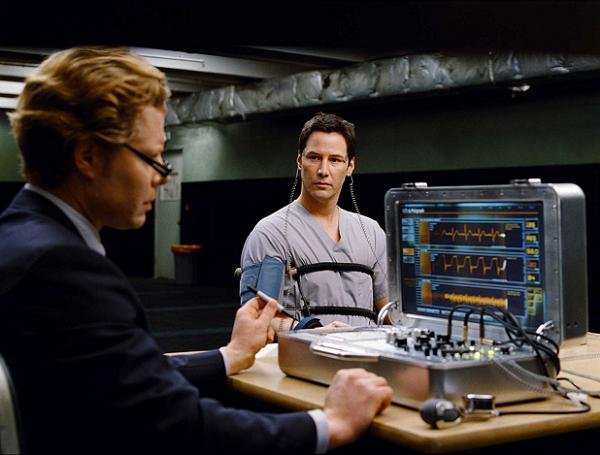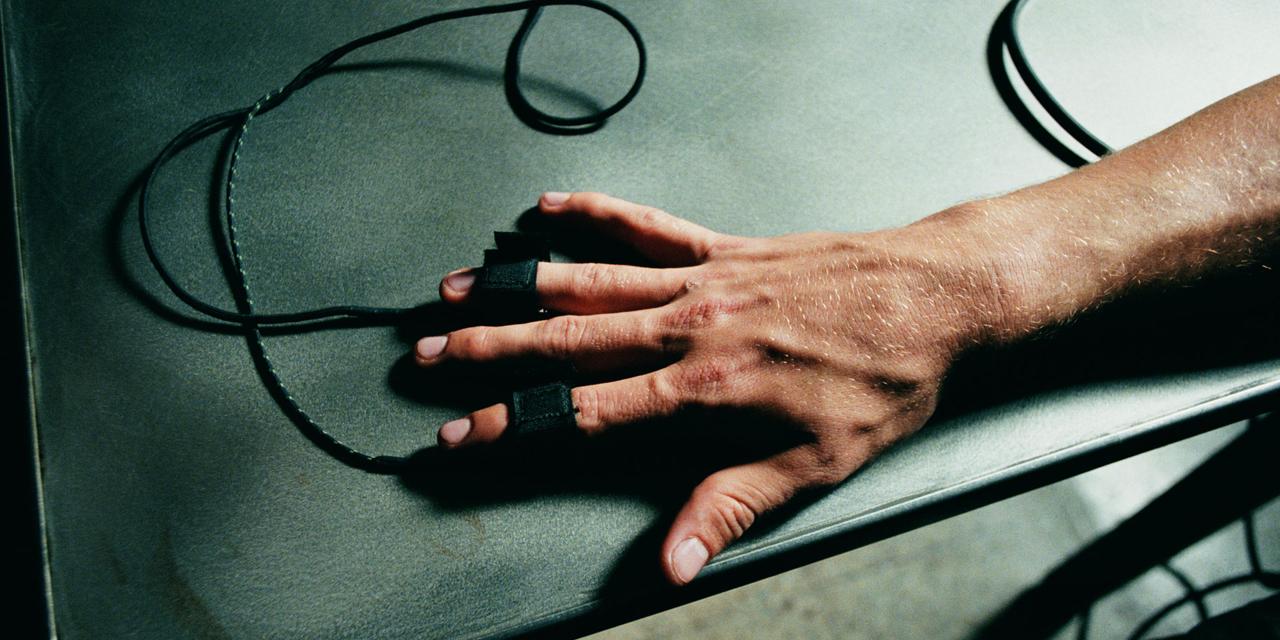The lie detector is a staple of American television – and indeed American law enforcement.
We’ve all seen people wired up to lie detectors that trace out squiggly patterns while an operator looks on with a serious expression and hunts for telltale signs of deception. But how do lie detectors work?

Well, if we really want to get to the truth we need to watch our language. Asking how lie detectors – polygraphs, to give them their technical name – work makes the assumption that they do work. But first let’s consider how they operate. A polygraph combines a number of sensitive instruments that would otherwise only turn up in a medical setting. There is some variation, but a typical polygraph is made up of five instruments. Two indicate respiratory rate by measuring the expansion and contraction of the chest and abdomen. Another measures blood pressure and pulse using a blood-pressure cuff. The final instrument measures the electrical conductivity of the skin, usually on the fingertips, which varies according to how much the subject sweats.
When the machine was invented in the 1920s, these measurements were all recorded on a moving paper roll that the operator could examine afterwards – having marked the point at which each question was posed. Today polygraphs are digital and a laptop takes the place of the paper roll, though often the computerisation is fairly superficial and a trained operator is still essential to interpret the results.
Advertisement
The polygraph is designed to measure physiological changes caused by emotional reactions that accompany deceptive behaviour. The idea is roughly that it is stressful to tell a lie and this emotional stress causes physical stress that the polygraph picks up. Everyone is different, of course, so each session begins with a few neutral control questions as a kind of calibration step.
That’s the procedure. Unfortunately, it’s not very reliable.
Many polygraph operators make no claim to detect lies, only to detect deceptive behaviour, although even that somewhat milder claim is a stretch. Psychologists have yet to find consistent physiological indicators of deception: One person’s respiration might change when they’re hiding something, but another person’s might not. And it’s possible to consciously alter the physiological responses that polygraph operators look for. Taking a sedative, pricking your skin or even just moving can muddle the results.
The polygraph is not the only approach to lie detection but none of the alternatives – such as vocal stress analysis, micro-expression analysis and brain scanning – have been proven either. And there are more philosophical problems that plague any lie detection scheme, no matter how deeply it probes. It can only detect if the subject believes they are lying. If they can convince themselves, or be convinced by others, that their responses are true then they can utter a falsehood without triggering any signs of deception – and vice versa.
In this part of the world lie detectors are mostly something you see only on television. Elsewhere, though, lie detectors are a fact of life that can make or break a case or a career. Sometimes, “truth” is stranger than fiction.














